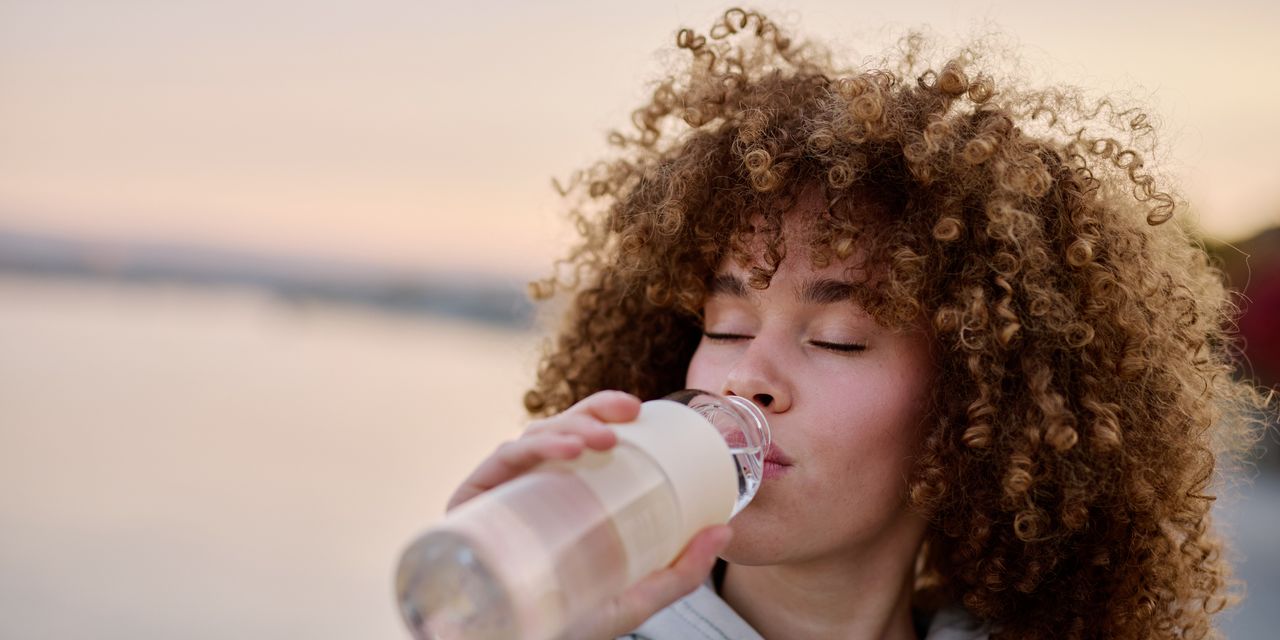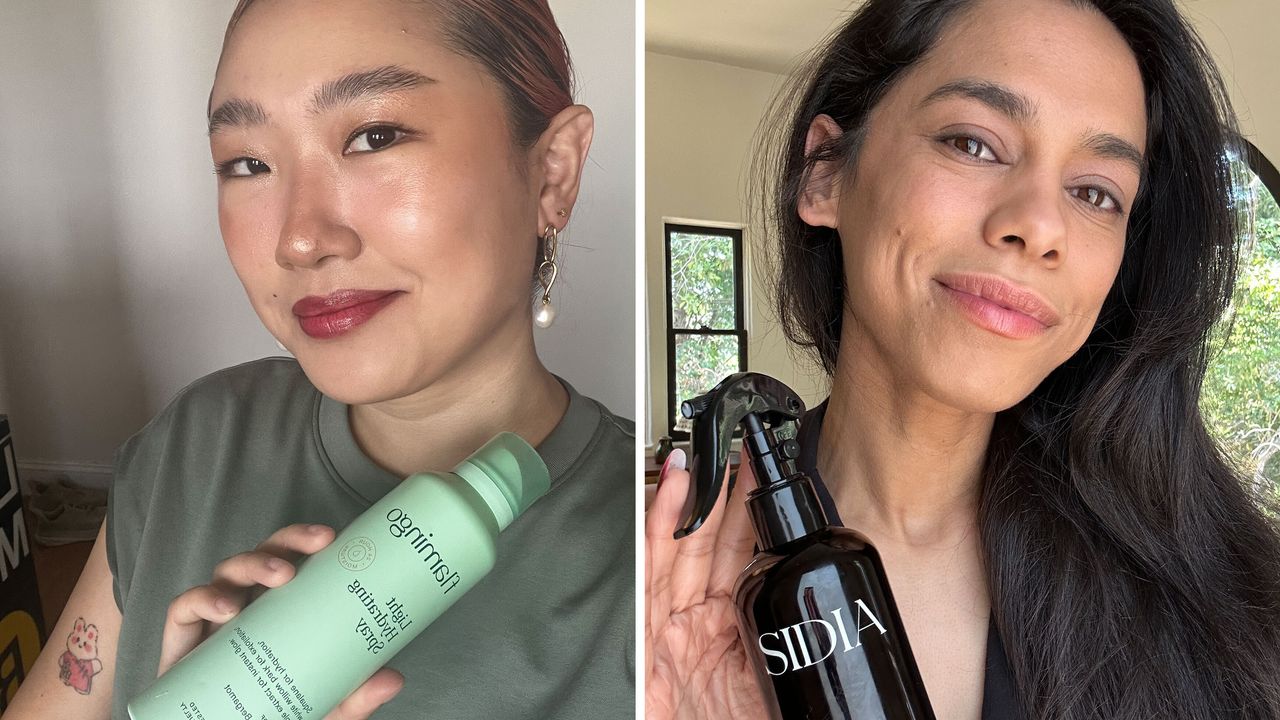Blog
When Did We Get So Fixated on Hydration?

- Water bottles are now trendy, serving as both a health tool and a fashion accessory.
- Hydration is key, but overdoing it can be dangerous and even life-threatening.
- You don’t need only water—tea, milk and juice also count toward your daily fluids.
Forget fancy bags, water bottles have become the new must-carry accessory. ‘Watertok’ and wellness influencers gave rise to the Stanley Cup craze, which evolved not just into a means of hydration but also a status symbol. In just four years, Stanley Cup sales went from $70 million to $750 million! Now, you can’t go anywhere without seeing Gen Zs carrying ‘emotional support’ water bottles covered in expressive stickers (like ‘hydrate or die-drate’). Let’s face it—it’s become overwhelmingly cool to hydrate.
Why the cultural fixation on hydration all of a sudden? There’s no doubt that hydration is essential, and many of us may overlook staying hydrated due to our fast-paced lifestyles. When you’re focused on churning out emails and carting your kids to activities, drinking water may fall to the wayside. But is the hydration trend all that it’s cracked up to be? And how much water is just overkill? We spoke with health experts to share answers to those questions and more.
The Hydration Culture—Where It Started and Where It Is Now
Before bottled and running water were a thing, people drank rainwater or water collected from mineral springs. Bottled water is thought to have become popular in the 1700s when spas with mineral springs realized they could bottle and sell their water for a profit. This mineral water gained a reputation as a healthier—even medicinal—option due to its mineral content. Bottled water fell out of favor when chlorinating municipal water became the norm in the early 1900s, but it gained popularity again in the late 1900s when brands like Perrier and Fiji gave it an air of prestige.
In the 1900s, people started adopting the goal of drinking 8 cups of water per day. “The idea that we need eight 8-ounce glasses of water a day likely stems from a 1945 recommendation by the U.S. Food and Nutrition Board, which suggested adults require about 2.5 liters of water per day. What’s often overlooked is that they also noted ‘most of this quantity is contained in prepared foods.’ That important caveat was lost in translation over time,” says Steven Goldberg, M.D., M.B.A.
The rise of wellness culture from the 1990s to the present has also led people to seek out bottled water as an alternative to diet soda or alcohol. In 2022, bottled water sales reached a record high, with 15.9 billion gallons sold. It was the seventh consecutive year that bottled water outsold carbonated soft drinks, such as soda.
Wellness culture has grown significantly over the last decade, largely driven by the rise of social media wellness influencers. As people, especially younger generations, become increasingly concerned about the environment and their health, the use of reusable water bottles is on the rise. Water bottles have practically become an accessory, with young girls deciding between an Owala, Yeti or Stanley cup to complete their look for the day.
To be honest, the fixation on bottled water has been more of a marketing success than a public health one. Even today, bottled water isn’t always the purer alternative to tap water that you may believe. In 2008, the Environmental Working Group found 38 pollutants—such as disinfection byproducts, industrial chemicals, radioactivity and bacteria—in 10 brands of bottled water. For two brands, bottled water was chemically the same as municipal tap water. Yikes!
What Water Can—and Can’t—Do to Support Your Health
“Water plays an important role in almost every process in the body,” says Callie Krajcir, RD. “It regulates body temperature through sweating, lubricates joints, facilitates digestion, transports nutrients and oxygen to cells, and helps flush waste through urine and bowel movements,” says Goldberg. So yes, hydrating is super important.
Your hypothalamus—a small region of the brain—helps ensure you meet your hydration needs by sending signals that trigger the sensation of thirst. It detects when your fluid levels are off and sends you a message to increase your fluid intake.
To make sure you get enough water, pay attention to the subtle signs of dehydration. “Dehydration doesn’t always announce itself loudly. Early signs include fatigue, dry mouth, dizziness and headache,” says Goldberg. In extreme cases, dehydration can cause confusion, fainting, shock and heart issues.
While thirst can help many healthy adults recognize dehydration, it’s not reliable for everyone. Thirst signals tend to be weaker in older adults, increasing the risk of dehydration. Medical conditions or medications that cause you to sweat or urinate more can also raise your risk of becoming dehydrated. Speak with your healthcare provider if you think you’re at risk for dehydration.
Although water is undeniably essential, there are a few myths worth addressing. For one, plain water isn’t the only way to hydrate. Other unsweetened drinks, such as unsweetened tea, sparkling water, seltzers, low-fat milk and 100% juice, can also be part of a healthy hydration routine. Second, caffeine isn’t always dehydrating. In moderation, caffeinated drinks like coffee can actually help you stay hydrated. Also, drinking water before a meal isn’t the weight loss hack you may believe it is. While some studies have found that drinking water before a meal leads to more weight loss than not, the difference is less than 5 pounds.
Can You Drink Too Much Water?
Yes, it is possible to drink too much water and doing so can be very dangerous. For example, in 2023, a Canadian TikToker was hospitalized after participating in the 75 Hard fitness challenge by drinking four liters of water for 12 consecutive days.
“Overhydration, or water intoxication, occurs when excessive water dilutes the sodium in the blood (a condition called hyponatremia),” explains Goldberg. “This can lead to swelling of cells, including in the brain, potentially causing nausea, seizures and even death in extreme cases.”
To be clear, this is very rare in the general population. You’d have to drink an unusually large volume of water to experience water intoxication. For example, in one research review on the effects of overhydration, the median water intake was 8 liters per day. That said, it can occur at lower volumes (as seen in the TikToker example above), and the cultural obsession with hydration challenges may lead to more cases like this in the future.
Other groups at risk of overhydration are “endurance athletes who consume large amounts of water without replacing electrolytes,” according to Goldberg. “Individuals with kidney, heart, or liver issues—who may retain fluid—should also hydrate carefully under the guidance of a healthcare professional.”
So, How Much Water Do You Really Need?
“How much water you need depends on factors like your age, gender, weight, medical history, medications, activity level, climate you live in and more,” says Krajcir. While 64 ounces, or 8 cups, per day is a popular recommendation, it may not be adequate for everyone.
“I follow the Academy of Nutrition and Dietetics recommendation of 3.7 liters (15.5 cups) in men and 2.7 liters (11.5 cups) in women [for my clients], but keep in mind that these numbers include the water you consume in food,” says Krajcir. We tend to get about 20% of our fluid needs from foods like fruits, veggies and some dairy products. With that in mind, daily fluid needs from beverages alone are closer to 9 cups for women and 13 cups for men.
You may have higher fluid needs if you live in a hot climate, exercise frequently or follow a diet high in sodium, protein, and/or fiber, according to Goldberg. Rather than getting fixated on one-size-fits-all recommendations or hydration ‘challenges’, tune into your body’s unique needs. One individualized way to gauge your hydration status is by checking the color of your urine. Ask yourself, “Is it pale yellow, like lemonade or dark yellow/gold, like apple juice?” encourages Krajcir. Pale yellow urine is a sign you’re well-hydrated, while dark urine can signal dehydration. When in doubt, speak with your health care provider for individualized guidance
Our Expert Take
Hydrating is undeniably important, but like most things, moderation is best. Too little or too much can be equally harmful. Experts generally recommend 9–13 cups of fluids per day, which can be obtained from a combination of water, coffee, tea, juice, milk and other primarily unsweetened beverages. Some people have higher or lower fluid needs, so speak with a healthcare provider if you have questions about your unique needs.





